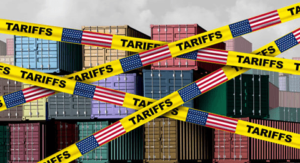
Human Capital Challenges Post-war Ukraine
Human Capital Challenges Post-war Ukraine are multifaceted and ominous. Beyond the staggering economic instability left by Russia’s aggression, the deep scars of war extend to the loss of human capital, akin to a modern-day brain drain. With over one-third of Ukraine’s population displaced and 6.3 million refugees globally, the country faces a critical challenge in reclaiming its educated workforce.
The majority of refugees are women and children, with a high proportion possessing tertiary education. Rebuilding education and the workforce necessitates addressing gaps in educational attainment, job destruction, and the increased demand for specific skills.
Encouraging repatriation through fiscal incentives and fostering connectivity between expatriates and the domestic economy emerge as crucial strategies, recognizing that reclaiming lost human capital is as intricate as reconstructing infrastructure.
Table of Contents
Human Capital Challenges Post-war Ukraine
Post-war Ukraine, under the shadow of human capital challenges, faces significant hurdles as the conflict has led to widespread displacement, loss of life, and economic disruption. The nation grapples with the need to rebuild its workforce, address trauma-related mental health issues, and provide education and vocational training for those affected.
Reintegrating displaced individuals into the workforce, fostering resilience, and investing in human capital challenges post-war Ukraine are crucial for the country’s recovery. The aftermath of war underscores the imperative of a comprehensive approach to rebuilding Ukraine’s human capital for sustained social and economic progress.
1. The Lingering Cost of War
In the aftermath of Russia’s aggressive invasion of Ukraine in 2022, the economic and human toll on the country is immeasurable. The Russia-Ukraine war has left Ukraine grappling with the devastating effects of widespread destruction, with estimates suggesting a staggering $411 billion needed for reconstruction over the next decade.
However, the challenges extend beyond the physical and financial aspects, encompassing the profound impact on human capital. The article delves into the multi-faceted challenges Ukraine faces in rebuilding not just its infrastructure but also its human capital, addressing the pressing issue of brain drain amid the human capital challenges post-war Ukraine.
2. The Human Toll of Displacement
The conflict has triggered mass migration at an unprecedented scale since World War II. Over one-third of Ukraine’s population, estimated at 44 million in 2021, has been displaced. Human capital challenges post-war Ukraine, such as the reintegration and skill development of the displaced population, further compound the complexities of recovery.
The global diaspora of Ukrainian refugees, standing at 6.3 million as of November 2023, signifies a substantial portion of the pre-war population residing outside the country. Capital investment is crucial to support the rebuilding efforts and infrastructure development required for the return and resettlement of the displaced population.
3. Positive Self-Selection and Educational Impact
Historical evidence suggests that displaced individuals during wars often exhibit positive self-selection, indicating that those leaving may be more educated. In Ukraine’s case, 90% of refugees are women and children, reflecting martial law restrictions on men aged 18 to 60.
This demographic composition highlights both the protective measures for the working-age male population and the potential human capital challenges post-war Ukraine may face due to the disproportionate representation of women and children among refugees.
Surveys indicate a higher percentage of tertiary-educated refugees compared to the overall Ukrainian population, underscoring the importance of addressing both educational and human capital challenges to ensure the country’s future development and political stability.
4. Educational Gaps and Job Displacement
Despite the Ukrainian education system’s resilience in adapting to wartime conditions through online schooling, the combination of the COVID-19 pandemic, economic challenges, and the invasion has created significant gaps in educational attainment.
The large-scale displacement has resulted in the destruction of millions of jobs, adding to the human capital challenges post-war Ukraine faces. Post-war recovery will require extensive remedial and retraining programs to address both economic and educational issues.
5. Women’s Labor Force Participation and Youth Integration
Rebuilding human capital involves not only addressing educational gaps but also maximizing the potential of those who remain, especially in the context of human capital challenges post-war Ukraine. Increasing women’s rate of labor force participation, creating employment-friendly family policies, improving remote working infrastructure, and establishing government-sponsored childcare facilities are crucial steps.
Additionally, integrating young people into the post-war labor market is essential but complex. Amidst these challenges, there are also business opportunities that can contribute to the reconstruction efforts. Balancing these human capital challenges with proactive measures can create a foundation for sustainable development and economic growth in the aftermath of conflict.
6. Encouraging Return and Fiscal Incentives
A two-pronged strategy is required to counteract the effects of brain drain and address human capital challenges post-war Ukraine. Firstly, Ukraine should encourage the return of expatriates after the war. Fiscal incentives, similar to programs in other European countries, can play a pivotal role.
Italy’s Controesodo program, offering income-tax exemptions to returning expatriates, serves as a potential model. Ukraine could implement a gradual and precisely structured tax scheme to attract high-skilled individuals back home.
Simultaneously, fostering innovative business ideas can further contribute to the country’s development by creating new opportunities for both returning expatriates and the local workforce. This dual approach not only addresses the immediate need for skilled professionals but also lays the foundation for sustainable economic growth in post-war Ukraine.
7. Fostering Interconnectivity and Remote Work
Recognizing that reversing outflows takes time and many refugees may never return, the second prong involves fostering interconnectivity between Ukrainian expatriates and the domestic economy, especially in the face of human capital challenges post-war Ukraine. Lessons from the refugee experience in Germany suggest that geographical proximity and internet connections can mitigate the impact of brain drain.
Embracing remote work, as witnessed during the pandemic, becomes a powerful tool in reclaiming lost human capital. Lessons, innovations, and knowledge transfer can occur online, ensuring that even if people do not return, their expertise contributes to Ukraine’s recovery. Crafting a perfect business plan that aligns with these principles can further enhance the integration of expatriates’ skills and experiences into the post-war economic aspect.
Bottom Line
In the wake of the devastation caused by Russia’s invasion, Ukraine stands at a critical juncture in rebuilding not just its infrastructure but its human capital. Human capital challenges post-war Ukraine, including addressing educational gaps and job displacement, are paramount to the nation’s recovery.
Tackling these issues and encouraging the return of skilled individuals will be crucial. Additionally, the impact of sanctions on the Russian economy further complicates the economic landscape in the region.
By adopting a comprehensive strategy that combines fiscal incentives, women’s empowerment, youth integration, and fostering connectivity, Ukraine can hope to overcome the challenges posed by the silent crisis of brain drain.
The path to recovery is arduous, but with strategic planning and international support, Ukraine can rise from the ashes and rebuild a stronger, more resilient nation.







